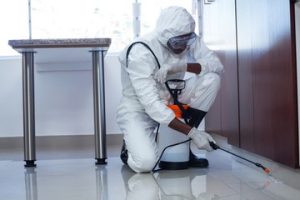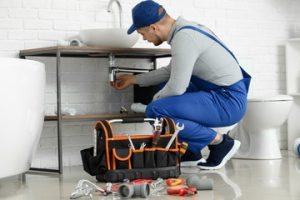Pest Control Port St Lucie involves eliminating unwanted organisms before they cause harm. Preventive methods include sealing cracks, keeping spaces clean, and removing food sources.

Biological control uses natural predators and parasites to reduce pest populations without damaging the environment. This approach is often more cost effective than chemical pesticides. Also known as Integrated Pest Management (IPM).
It is important to correctly identify pests so that the proper steps for control can be taken. It is also important to assess the situation and environmental conditions that led to the pest infestation. Accurately identifying the pest can help to determine damage thresholds and prevent the misuse of chemical controls.
Pests can cause a wide variety of problems, from lowering the yield on crops to making homes uninhabitable. Some pests can carry diseases that could threaten the health of plants and animals, and others can contaminate food.
Some pests are easy to spot, such as rodent droppings or cockroaches crawling around a pantry or trash can. Other pests are more difficult to identify, especially as they progress through their life cycles. For example, immature beetles or caterpillars can look similar to adult insects. Incorrect identification can lead to the use of ineffective pesticides or even harmful chemicals that may not target the specific pest problem.
For residential pest control, homeowners can usually recognize a pest problem by the sight of an insect in or on a home. If a pesticide is used, it is important to carefully read and follow the label instructions. It is also recommended to select a pesticide that poses the least risk to people, pets and the environment.
A professional pest management company can evaluate a home’s pest problem and recommend an appropriate pest control treatment. Some pests, such as roaches or termites, require more frequent treatments than other pests. In addition, the location of a home can influence how often pest control services are needed. For example, an apartment building in a rural area may need more frequent services than a house in the city.
Farmers can implement an Integrated Pest Management (IPM) plan to manage pests and improve crop quality, soil and water quality. This approach combines biological and physical controls, such as beneficial insects, with reduced chemical usage. IPM can reduce pest resistance and allow for more precise applications of chemicals.
For pests such as weeds, fire blight or disease-causing fruit flies, the goal is to eradicate them from a specified area. Eradication may be achieved through a combination of techniques, including spraying an area with sterile insects, removing and burning infested materials or fumigating with cyanide.
Prevention
Prevention is a critical component of pest control. It involves making the environment unfavorable to pest development by altering or eliminating conducive conditions. This can include proper sanitation, keeping buildings, yards, or greenhouses free of waste and debris, timely harvesting, adjusting planting dates to optimize competition with weeds, and other cultural practices that promote plant health. It can also involve using natural enemies to injure or consume pests, growing insect-resistant plants, modifying irrigation water management, or employing physical controls such as barriers and traps.
It is important to know what preventative measures are available to reduce the need for pesticides. This will help you decide when it is appropriate to treat for pests. Some pests may carry diseases that threaten human health. Rodents and birds, for example, can introduce bacteria like Salmonella and E coli into food and water. They can also contaminate surfaces with their droppings, feathers, and dander, triggering existing medical conditions such as asthma.
If a pest infestation has already occurred, it is often easier and less expensive to control them with non-chemical methods. Exclusion, repellents, and traps can eliminate many pests from living or working areas. Regularly scheduled maintenance to repair screens, caulking, and plastering can help prevent pests from entering buildings. Store products off the floor or on high shelves to make them difficult for pests to access. Keep garbage cans sealed, and trim bushes or shrubs that could provide a bridge into the building.
When non-chemical treatments are not effective, it is important to understand that pesticides should be used sparingly and only when absolutely necessary. They should be applied at the most vulnerable stage of the pest life cycle and when they will be most effective. If an insecticide is used, it should be a targeted pesticide that does not harm beneficial insects or the environment.
If you decide that a pest problem is serious enough to warrant treatment, monitoring can help identify the location and severity of an infestation. It can also help determine the underlying influences that are creating an environment favorable to pests, such as weeds, poor soil condition, and overcrowding. In addition, proper sanitation can greatly reduce the need for pesticides by limiting the opportunity for contamination.
Treatment
Pests can spread diseases, ruin food or crops, and damage buildings and other structures. They also contaminate surfaces, create unsafe conditions (for example, slippery walkways from bird droppings) and may trigger allergic reactions in some people. Pests can also cause significant legal ramifications for businesses if they violate health and safety regulations.
A pest problem can be prevented by keeping living or working areas clean and making sure they are well-irrigated. Other preventive measures include sealing cracks, using insect-repelling plants, and limiting the amount of water available to pests.
In addition to reducing the need for pesticides, these practices are often less expensive and safer than extermination methods. Pest control specialists can help you determine if nonchemical treatments are appropriate for your situation.
When a pest infestation is detected, it is important to act quickly to limit the spread of the pests. Preventive measures are usually adequate, but in some situations extermination might be needed. Extermination includes a wide range of techniques that are applied directly to pests or their environment. These can include baits, traps, or fumigation. Chemicals such as insecticides, rodenticides and fungicides are used for more severe infestations.
Before applying pesticides, it is important to understand the life cycle and biology of the pest you are trying to control. Use pest-specific products, if possible, to minimize the risk to beneficial insects and other organisms that could be affected by the chemicals.
Using preventive strategies can significantly reduce the need for chemical treatments, but when prevention fails, eradication might be necessary. Infestations should be monitored regularly, and when a threshold level is reached, treatment should be initiated. If you do decide to use a pesticide, read product labels carefully and follow proper personal protective equipment guidelines. These include wearing long sleeved shirts, closed-toe shoes and gloves, and face and eye protection. Pesticides must be applied at just the right time to work effectively. Also, be sure to monitor your area frequently and report problems immediately. In addition, keep pests from accessing food or water by storing items in sealed containers and fixing leaky faucets.
Follow-Up
During the inspection process, it is important for pest control professionals to document everything they find. This includes identifying the pests and assessing their severity. It also helps in devising effective treatment methods. Accurate identification can help prevent mistreatment, which can lead to unnecessary use of resources and increased risks for residents and pets. Using field guides, online databases and professional pest-identification services can provide accurate and thorough results.
Taking note of key identifiers can make it easier to distinguish one pest species from another, such as size and colour. Observing behaviour and environmental factors can also narrow down the category. For example, cockroaches tend to gather in dark and moist environments, while bed bugs thrive in sleeping areas. The inspection process should also include checking for signs of infestation such as droppings, gnaw marks, nesting or damage to food packaging. Using tools like flashlights and mirrors to examine hard-to-reach places can help identify potential pest entry points, and a moisture metre can assess damp areas that may attract pests.
Once the pests have been identified, a thorough treatment plan can be devised to eradicate them and prevent future infestations. This usually involves a combination of strategies, including sealing cracks and crevices, using bait stations, introducing natural predators and creating physical barriers, as well as applying chemical treatments when necessary. The duration of treatment can vary depending on the pest type, infestation level and the treatment method. For instance, a chemical spray or dust can kill pests instantly, but it may take longer to eradicate eggs and their offspring. Weather conditions can also influence the efficacy of treatment methods, with rain and humidity delaying results.
Regular follow-ups can ensure that the pest problem has been fully addressed and prevent re-infestation. Routine inspections and monitoring can also make it easier to identify and address new problems promptly, preventing them from becoming major infestations that require costly and extensive treatments. In addition, pest-proofing the home can minimise the need for pesticides in the long run, which is a positive for health and the environment.
